The fairy ring mushroom, scientifically known as Marasmius oreades, is a common sight on lawns, meadows, and pastures in summer and fall. Fairy ring mushrooms are an edible species enjoyed by many but also commonly ignored because they are small and rather ordinary looking.
- Scientific Name: Marasmius oreades
- Common Names: Fairy Ring Mushroom, Fairy Ring Champignon, Scotch Bonnet, Faux-Mousseron (French)
- Habitat: Lawns, meadows, yards, pastures
- Edibility: Edible
- Psychoactive properties: None
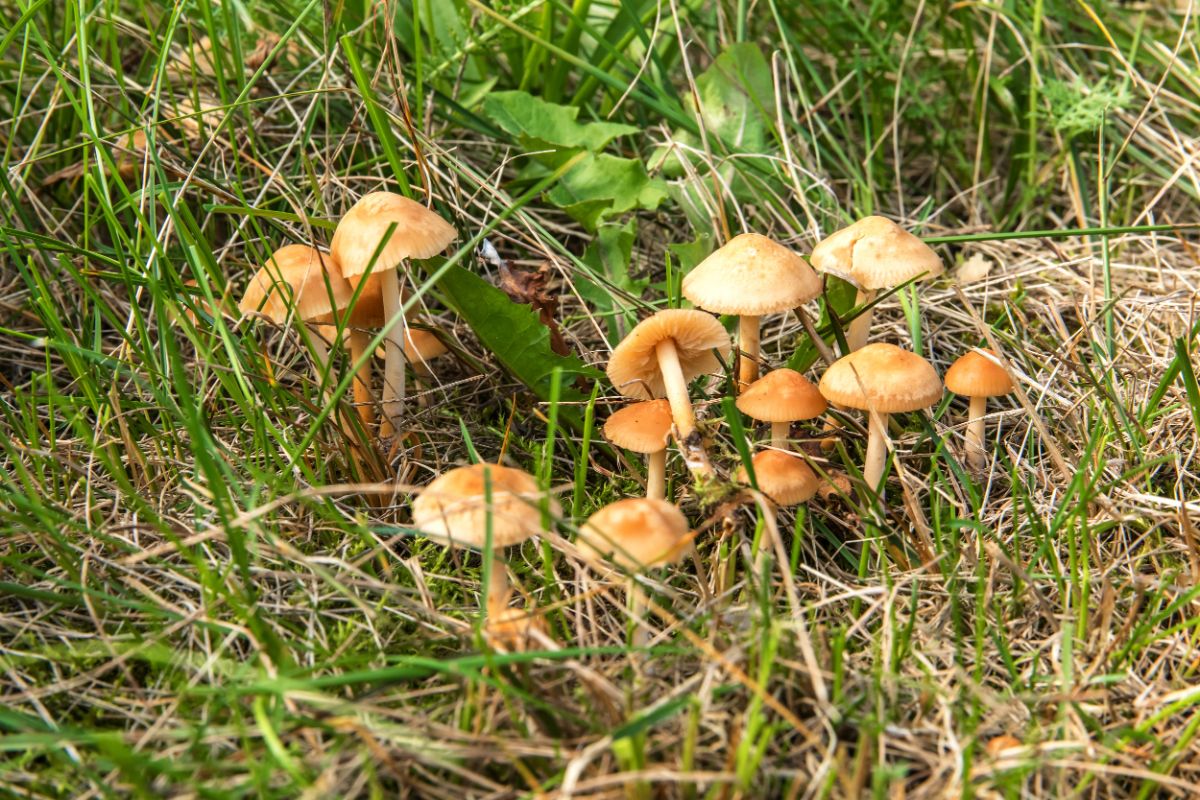
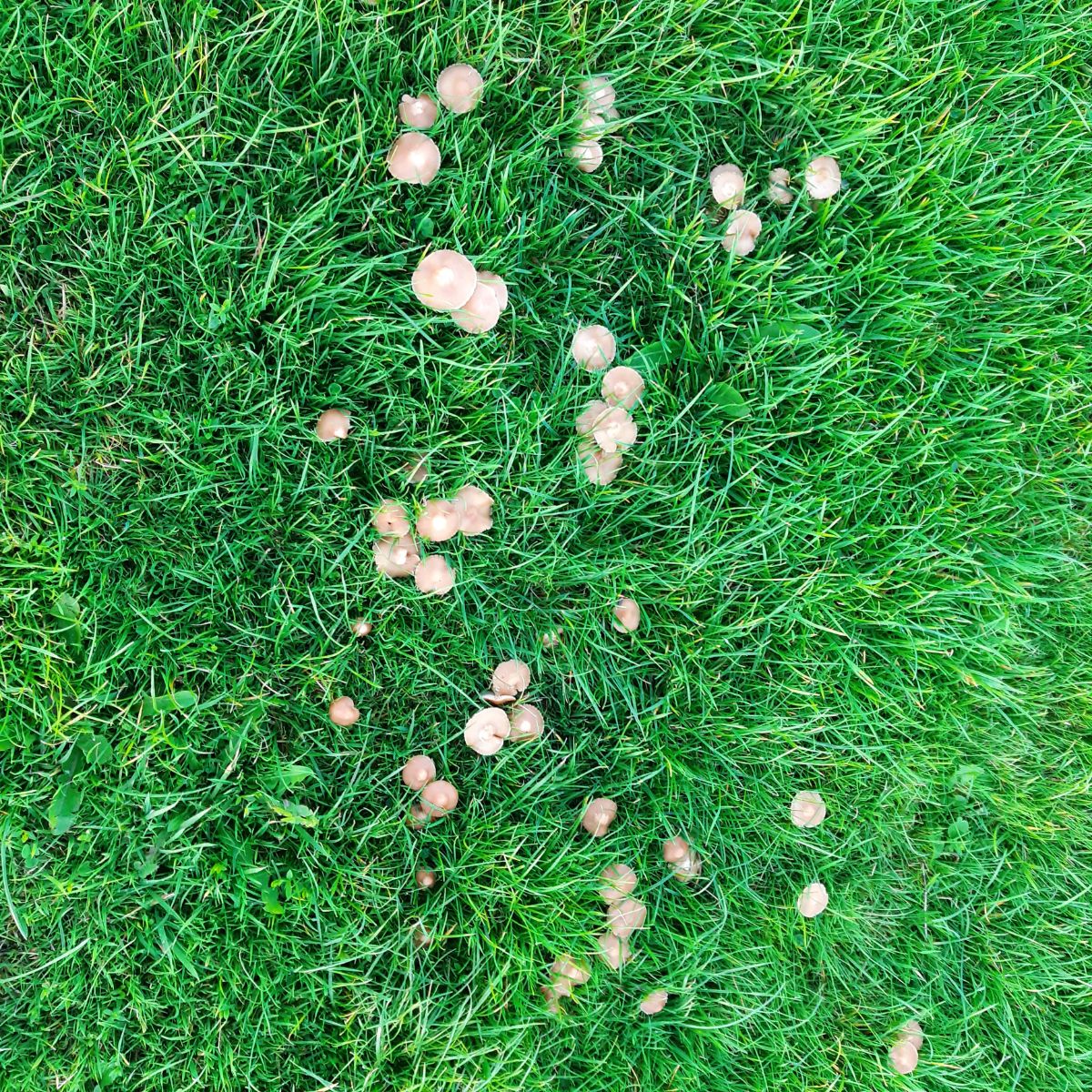
Jump to:
All About The Fairy Ring Mushroom
Fairy Ring Mushroom is a small, tan to reddish-brown mushroom with off-white gills. It is native to North America and Europe and often grows in grassy areas, lawns, meadows, and even dunes in coastal areas. The mushroom is known for its unique growth pattern, often forming arcs or circles called fairy rings.
The fairy ring mushroom’s common name is derived from the folklore surrounding the circular patterns in which it grows. These patterns, known as fairy rings, have been associated with magical creatures and supernatural phenomena in various cultures throughout history. The mushrooms’ unique growth patterns and ability to regenerate after drying out have contributed to their mythical status.
In fact, their ability to reconstitute after drying has given them the title of “resurrection mushrooms.” They can dry out completely in the summer sun only to reflate with a good rain, even to the point of producing new cells and spores. This ability to regenerate is possible due to trehalose, which is a sugar that prevents fatal cell damage even when the mushroom is completely dried up.
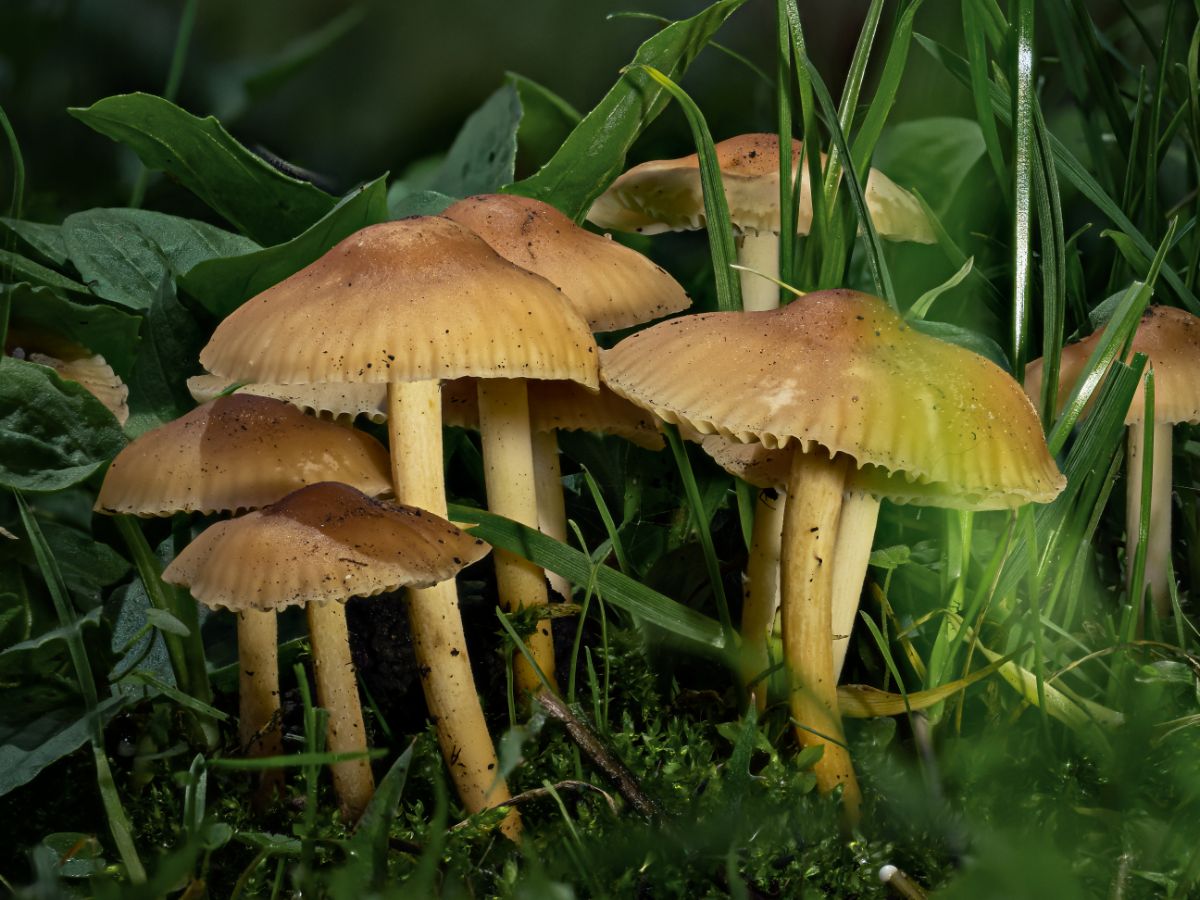
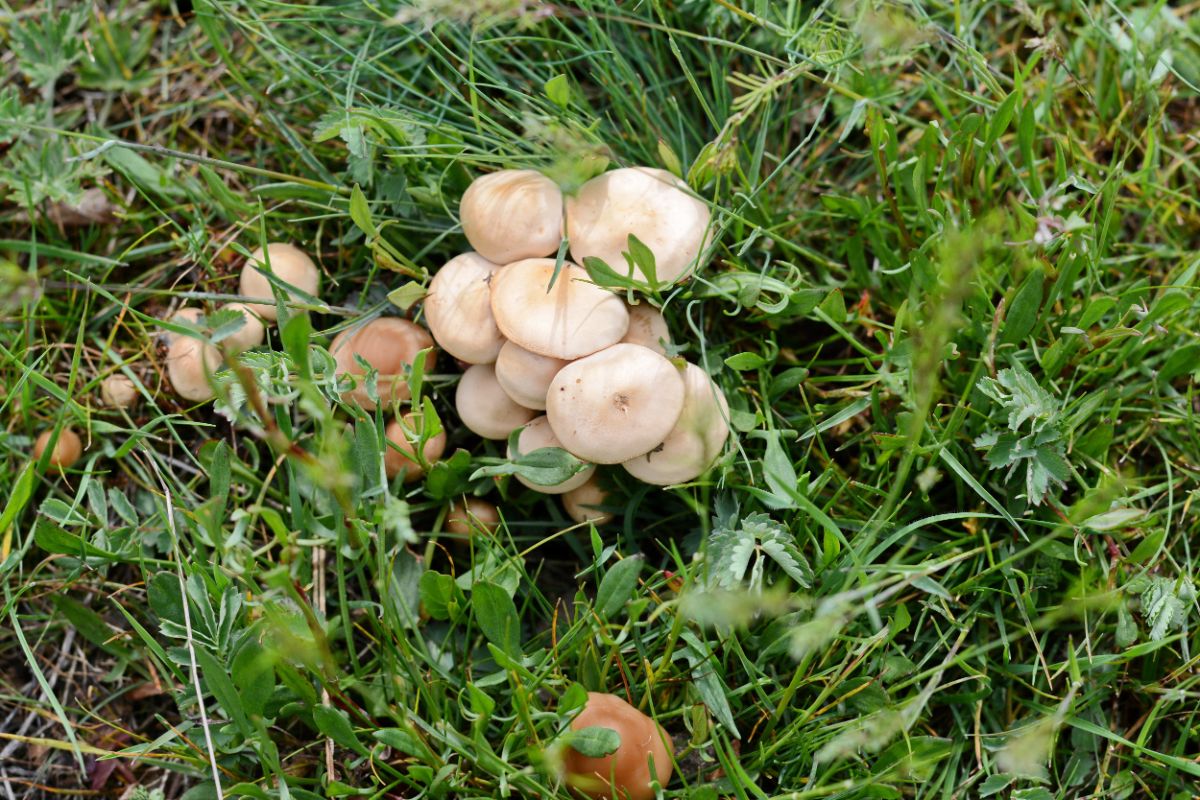
The Fairy Ring Mushroom Conundrum
There is a big problem with the common name of this mushroom. It is “the” fairy ring mushroom but not the only mushroom that grows in fairy rings. Quite a few other mushrooms form fairy rings, actually, including the meadow mushroom and the false parasol.
The propensity for other mushrooms to grow in a ring on a lawn or meadow means that they also get called fairy ring mushrooms. And this leads to A LOT of confusion. It’s one reason common names, in general, can be complicated and misleading.
When you use the term fairy ring when identifying mushrooms, it’s essential to indicate whether you mean this mushroom or are just using it as a general term to describe another species. Calling any mushroom that forms a ring in the lawn a fairy ring mushroom is okay as long as one understands that it can be one of a number of species. The confusion can be avoided by using the scientific names, of course, but fairy ring mushroom is easier to remember as long as we acknowledge the potential confusion involved with using it.
The fact that any mushroom grows in a fairy ring should never be the sole identifying feature of the mushroom. As you’ll see from the lookalikes listed further down, assuming that all mushrooms that grow in rings are the same or are a primary identifying feature can lead to very serious consequences.
Other fungi that grow in fairy ring formations (there are many more than is on this list):
- Meadow mushrooms
- Parasols
- Shaggy Parasols
- False Parasol
- Puffballs
- Amanitas
- Matsutake
- Pig’s Ear
- Chanterelles
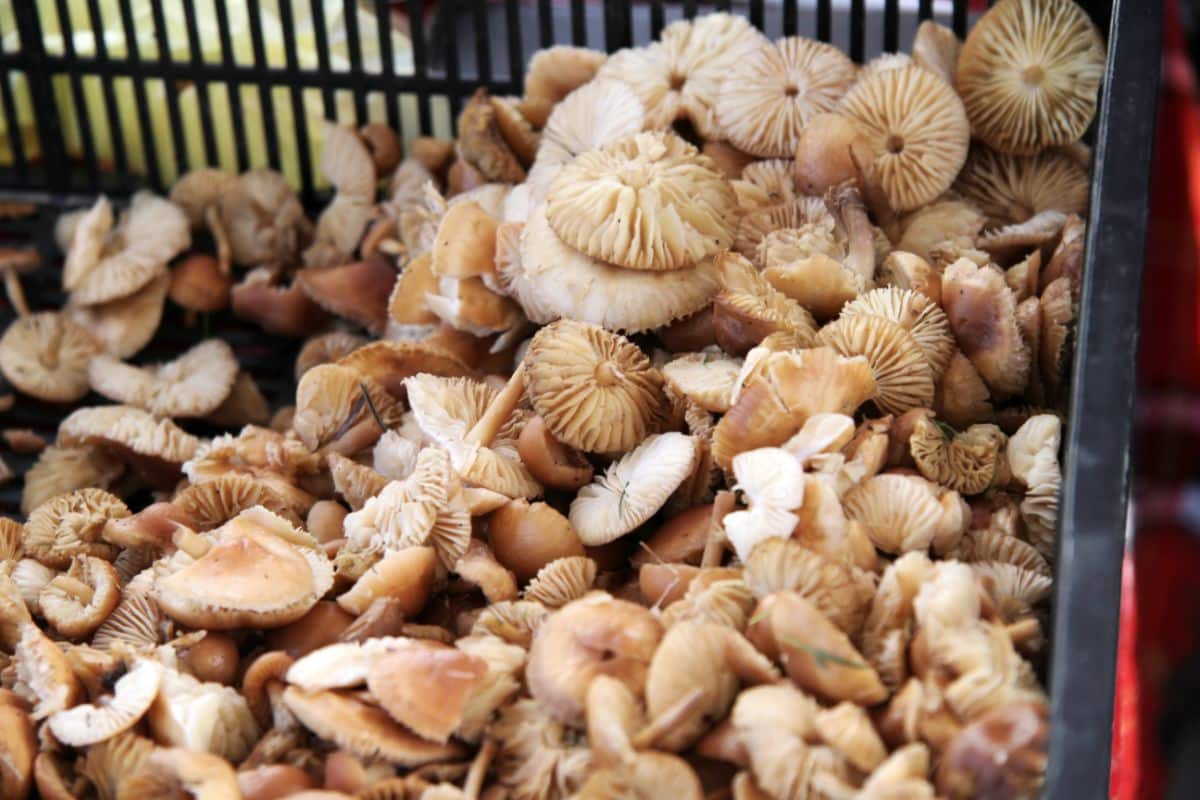
Fairy Ring Mushroom Identification Guide
Season
In North America, they appear between June and November. In warmer climates, fairy ring mushrooms can be found year-round. They’re more common on the east coast but grow in all regions of the country. These are small mushrooms that just need sun and a good amount of rain to appear, and they will “pop up” overnight, given the right circumstances.
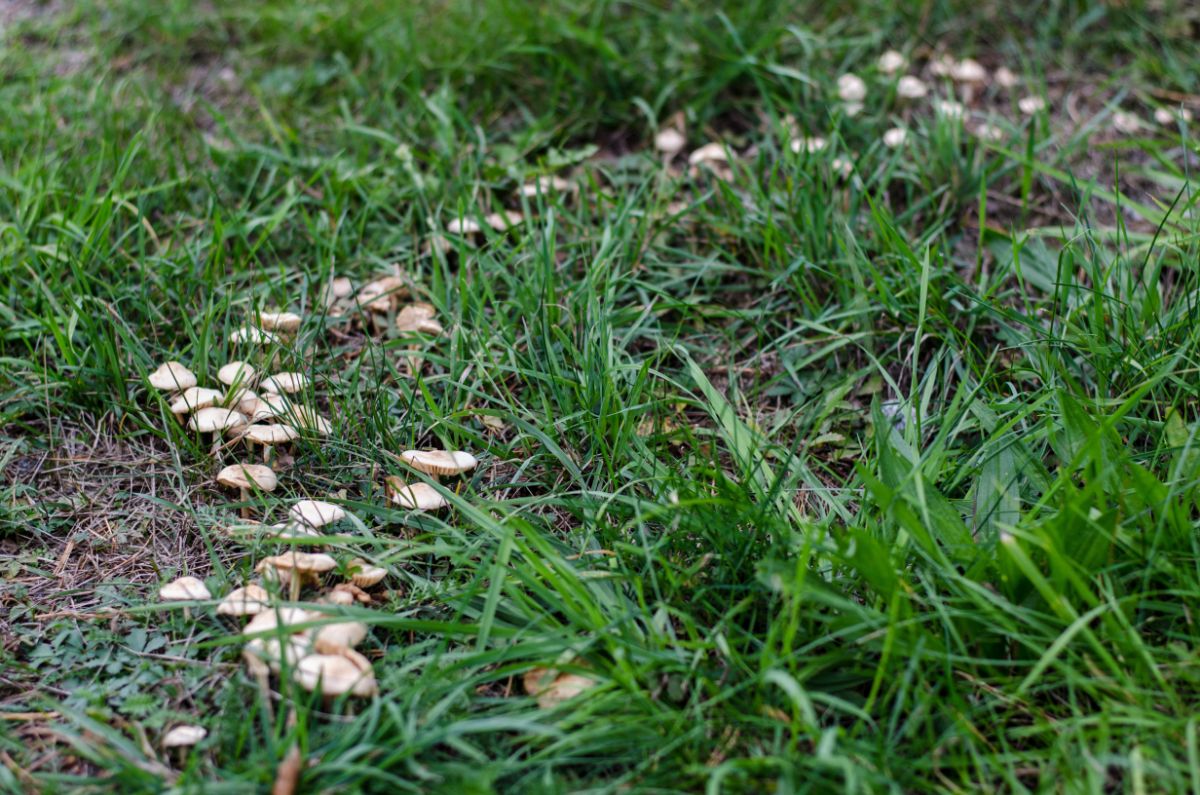
Habitat
Fairy ring mushrooms are commonly found in grassy areas, such as lawns, meadows, parks, and the outer edges of pastures. They thrive in sunny, open locations and are typically found in rings or arcs on the ground. These mushrooms are a very common yard species and will appear in urban and suburban lawns, public grassy areas, and just about anywhere there is a great green lawn and lots of sun.
The fairy mushrooms also grow in coastal sand dunes. They only grow from the ground, never from trees or wood. Usually, fairy ring mushrooms appear in large groupings (troops) or dense clusters, but they can also be found growing singularly.
It is common for fairy ring mushrooms to be intermixed, meaning there might be more than one mushroom species growing in an area or a general ring-like formation together. Be very careful with identifying each fruiting body, and pay attention if you intend to harvest these.
Because fairy ring mushrooms grow on lawns and public areas, it is necessary to exercise caution when foraging them due to potentially toxic chemicals in the grass or ground. Make sure you only gather from locations that do not treat their lawns with chemicals.
Fairy ring mushrooms appear in the same location year after year, so if you find some, mark that location! There are reports of these fungi fruiting in the same location for over 100 years.
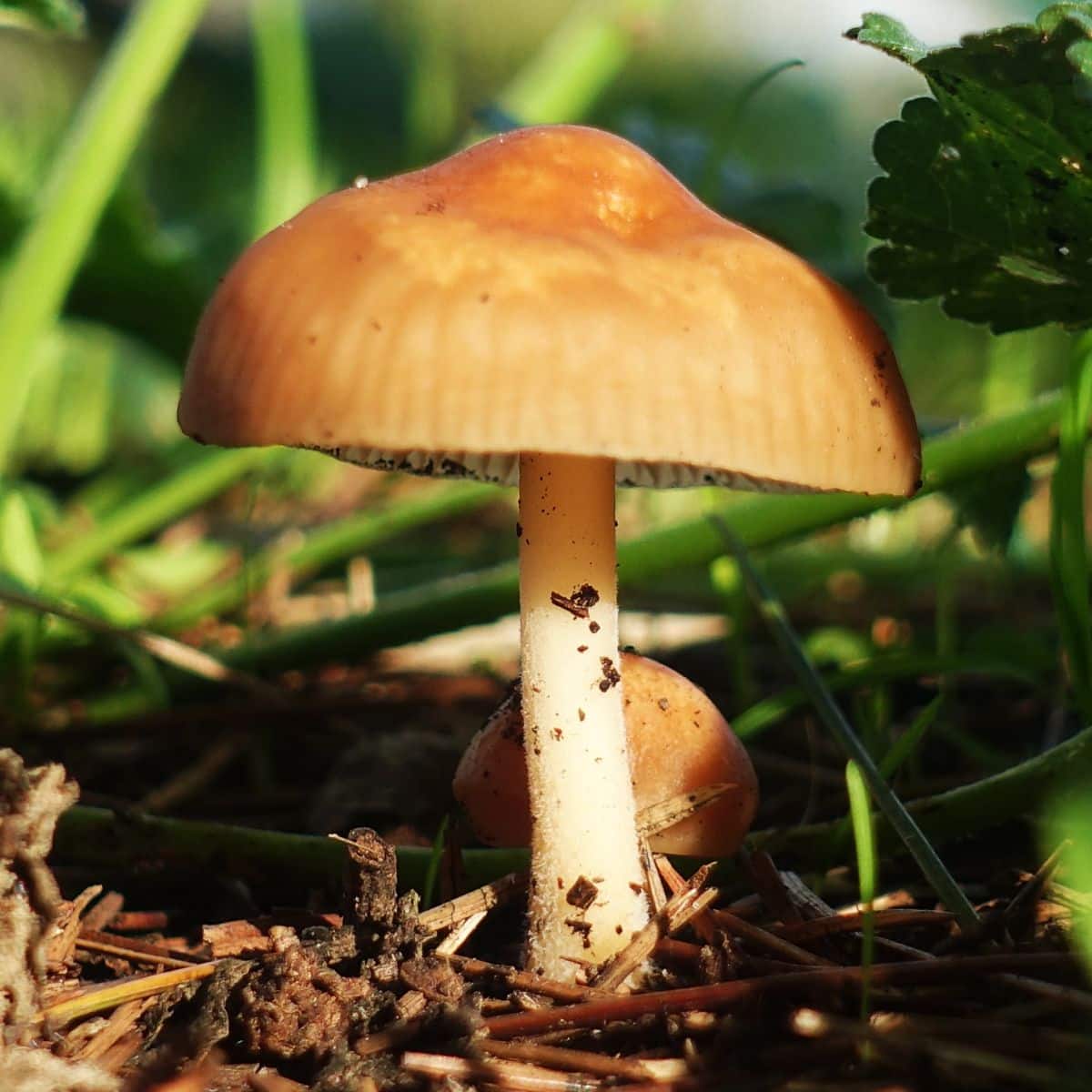
Identification
Cap
The cap is bell-shaped, with its edges rolled inwards a little bit. The cap flattens out as it ages but retains a knobbed central bump. The caps are pale tan to buff to reddish-brown, dry, smooth, and have a felt-like texture. There are no ornamentation or markings on the cap. Caps range in size from ½ inch – 2 inches across. However, even though this is their “normal” size, reports of them being up to 5″ across aren’t uncommon.
Gills
Fairy ring mushroom gills are broad, reasonably thick, well-separated, off-white, and attached or free from the stem. There is actually a mix of gill structures, with some of them short and not touching the stem and some of them attaching to the stem. The gills have a cyanide-like odor (like bitter almonds).
Stem
The stem is smooth, undecorated, cream to pale buff, and tough. It does not break easily but isn’t tough either – the stem is flexible and bendy but doesn’t snap off readily. Stems range in size from 1 – 2 ½ inches tall. They are skinny, and sometimes the coloring is gradated, with the bottom portion being darker in color than the top.
Flesh and Odor
The flesh of the mushroom is white and does not change color when bruised or cut. It doesn’t have a distinctive small, just mushroomy.
Spore Print
White
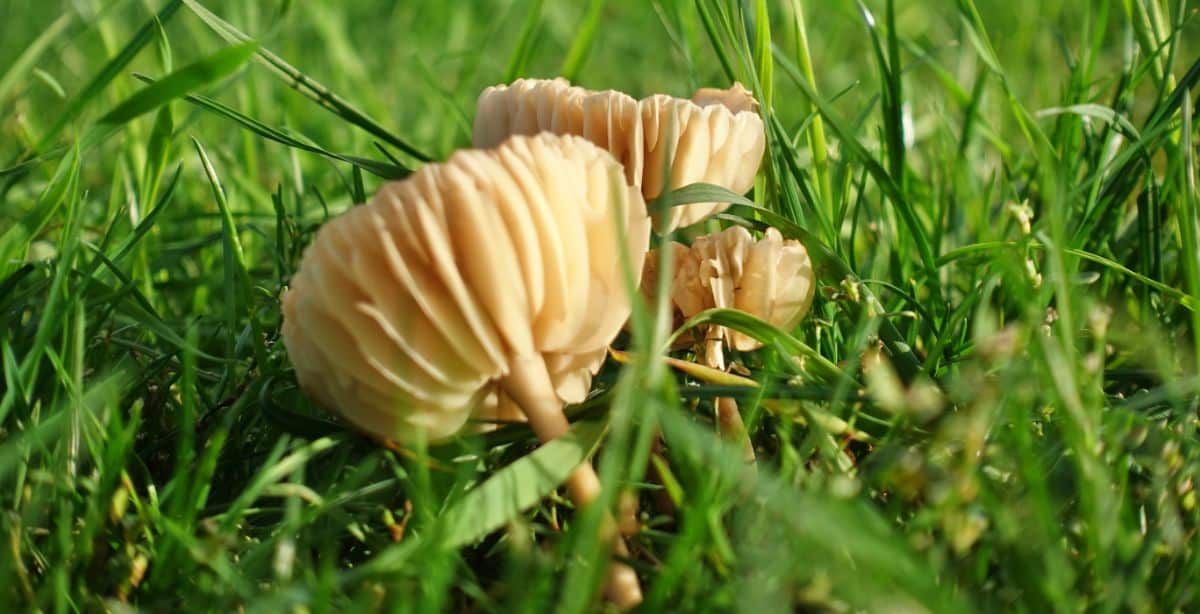
Key Identification Features:
- Pale tan, cream-colored, or brownish cap between 1-3 inches wide (small!).
- Bell-shaped cap with a noticeably raised center, like a nipple (although young ones may lack this clear definition and just be bell-shaped)
- Stem is tough yet pliable – it will bend easily but doesn’t break readily
- Widely spaced white or buff-colored gills with an unmistakable mix of long and short gills.
- Grows in grass
- White spore print (when in doubt, do a spore print!)

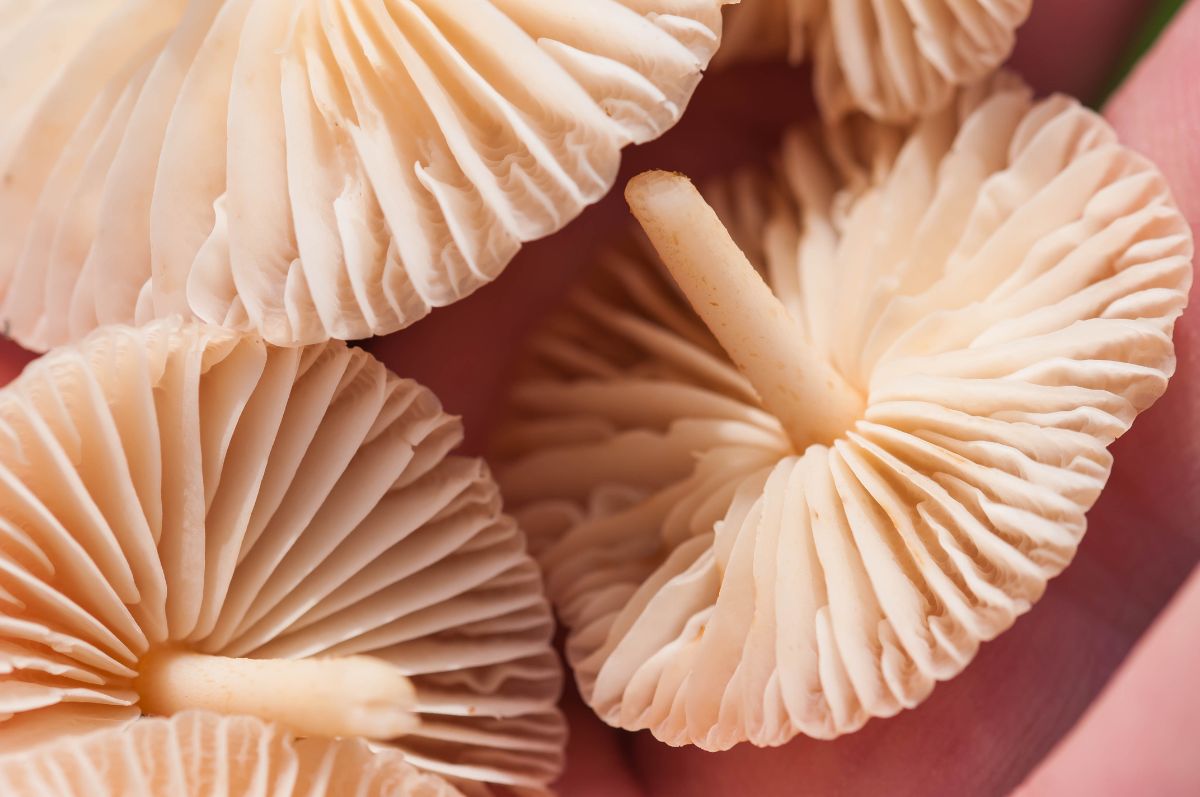
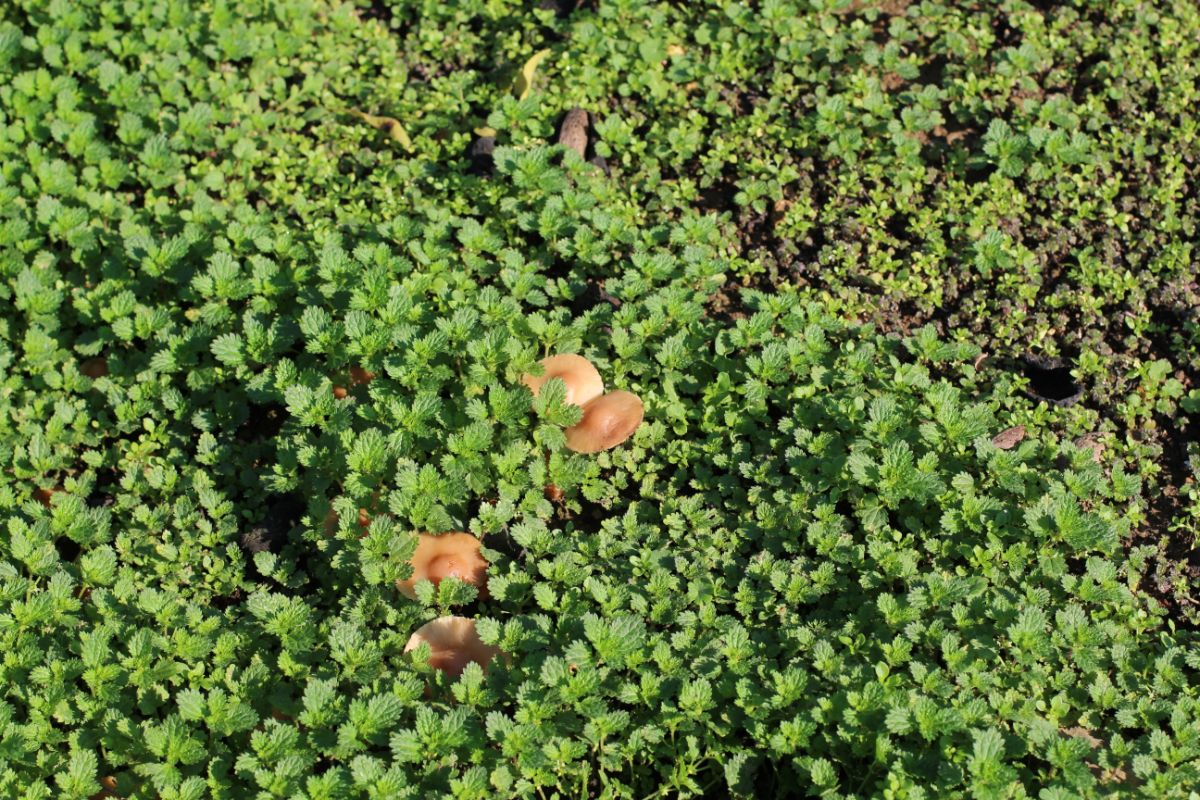
Fairy Ring Mushroom Lookalikes
Some of these lookalikes are toxic and can cause serious health issues if consumed. It is crucial to differentiate between the fairy ring mushroom and its lookalikes to ensure safe consumption.
Fool’s Funnel (Clitocybe dealbata & Clitocybe rivulosa – so similar, possibly the same species)
These deadly toxic species don’t look too similar to the fairy ring fungus. Still, fool’s funnel commonly grow in a fairy ring pattern which causes confusion and the potential for mistaken identity. They will also grow intermixed with other species, so paying attention to each specimen is extremely important if you choose to forage Marasmius oreades.
These mushrooms have closely spaced white gills and a whitish-gray cap. The gills may run down the stem a little ways or be just attached to the stem. This mushroom lacks the distinctive umbo (nipple-like projection) found in fairy ring mushrooms.
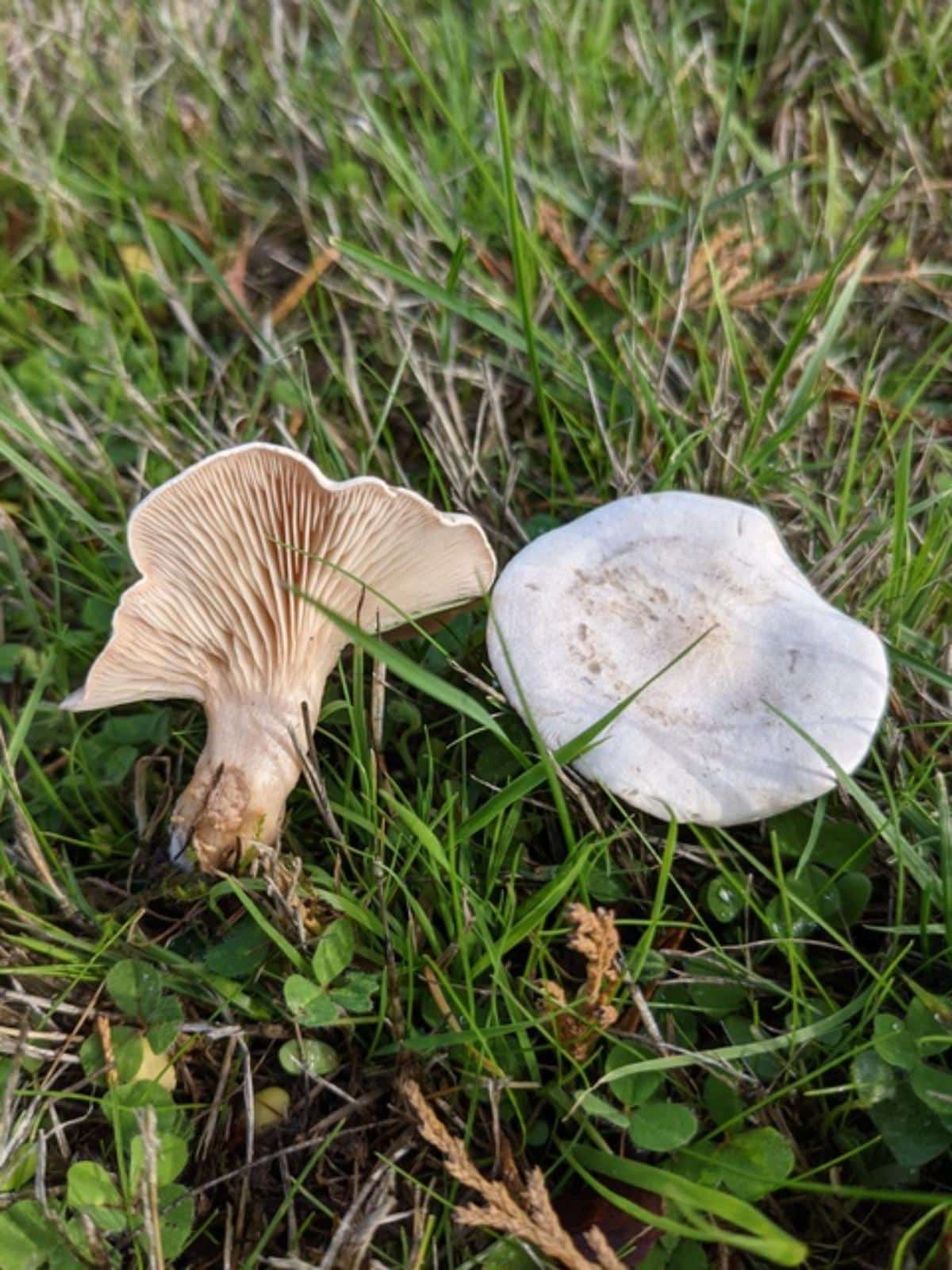
Inocybe species
These are poisonous mushrooms with gray-brown gills and conehead hat-like caps, often with nipple-like centers, which make them very similar looking to the fairy ring mushroom. However, they have a distinctive odor and brittle stems, unlike the tough and pliable stems of fairy ring mushrooms. Remember to smell the mushrooms and check that stem! And do a spore print! Inocybe species have brown spore prints.
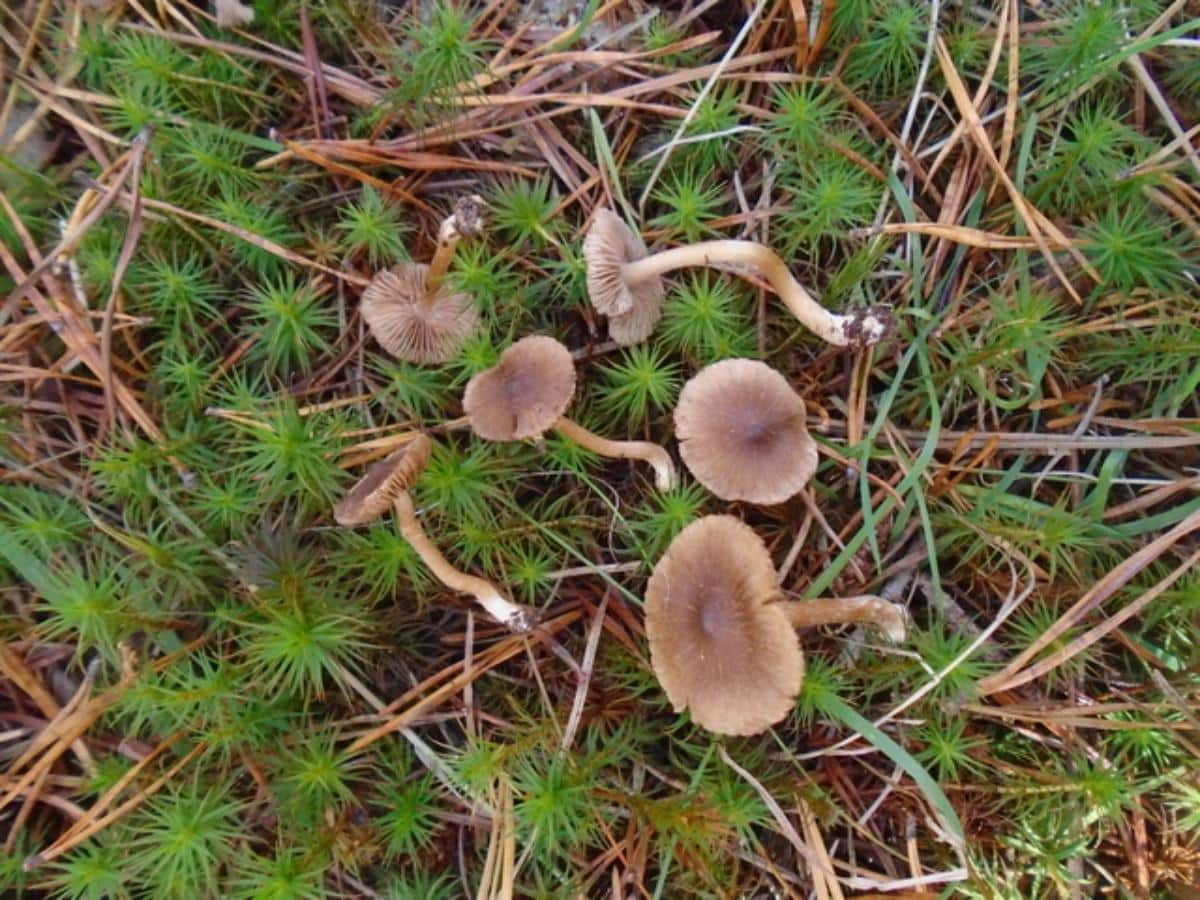
Spring Fieldcap (Agrocybe praecox)
This is also a little brownish mushroom that grows in meadows and lawns. The cap is usually creamy pale tan, and the mushroom has pale yellow or whitish gills. When it looks like this, it is quite similar to the fairy ring mushroom. With age, though, the gills turn brown, which sets it apart from the fairy ring. This mushroom also lacks the distinctive nipple-like cap center.
The spring fieldcap is edible, though most consider it poor quality and not worth foraging.
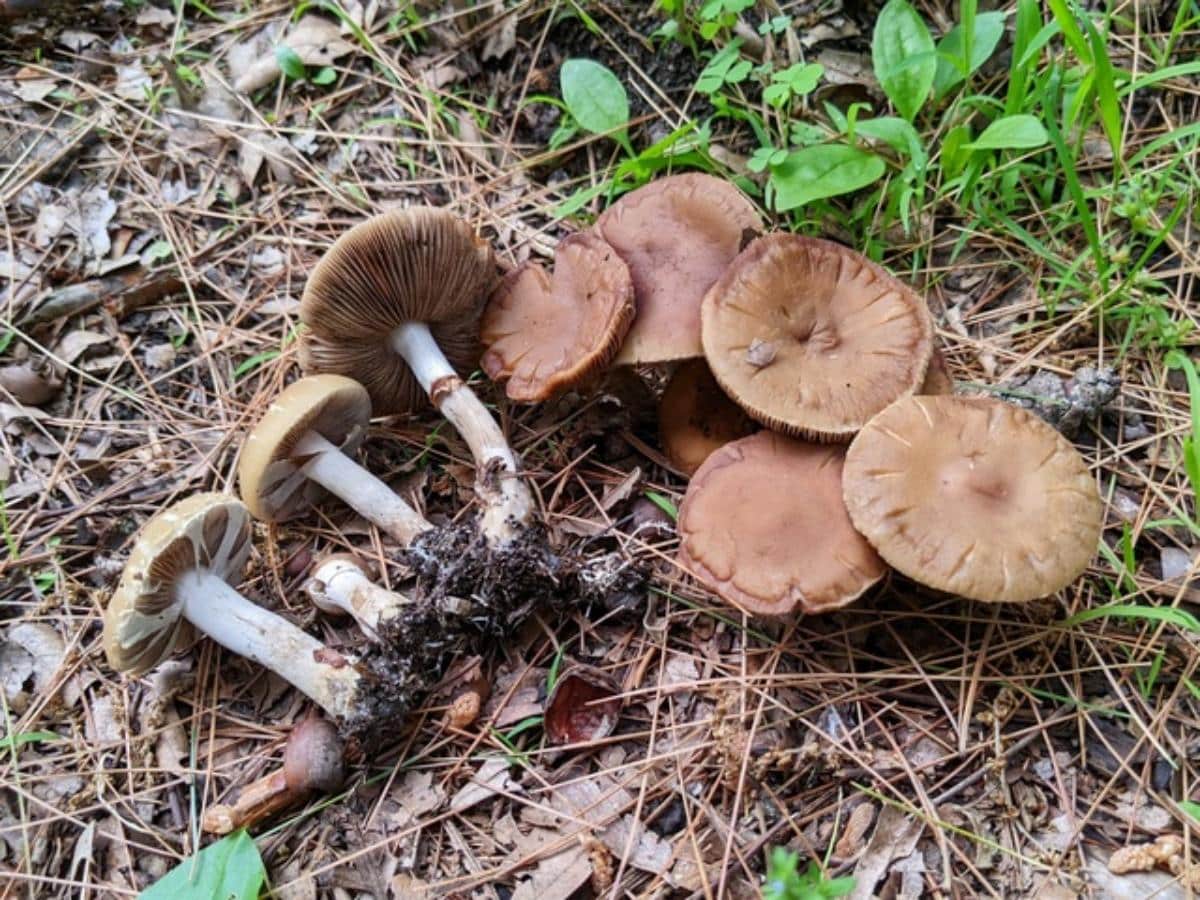
Gymnopus, Collybiopsis, Marasmiellus, Micromphale, and Strobilurus genera
These similar-looking species are complicated, and too many to name individually. And they may require microscopic analysis to identify. Many of these species have limited or tropical-only distribution, so you may or may not encounter them often, depending on where you live.
In general, they are small whitish or brownish mushrooms with caps and gills and slender stems, just like the fairy ring fungus. To be sure you’ve found a fairy ring mushroom and not one of these other LBMs (little brown mushrooms), make sure you go through the checklist in the previous section. The fairy ring mushroom must match all that criteria, something none of these similar species can do in entirety.
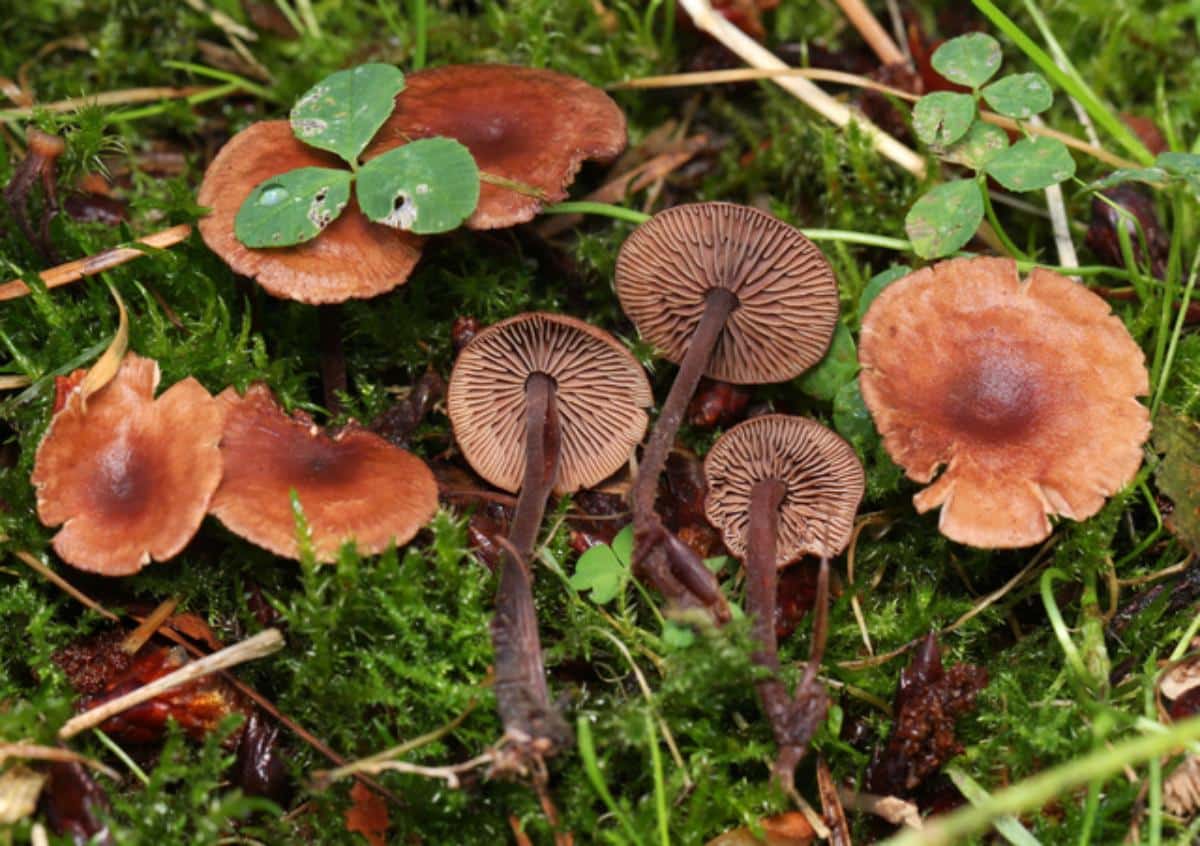
Cooking With Fairy Ring Mushrooms
Fairy ring mushrooms are considered a choice edible species with a sweet taste and firm, chewy texture. Their flavor is described as rich, meaty, and nutty, with a note of cinnamon. However, it is essential to exercise caution when consuming this mushroom, as several toxic species resemble the fairy ring mushroom.
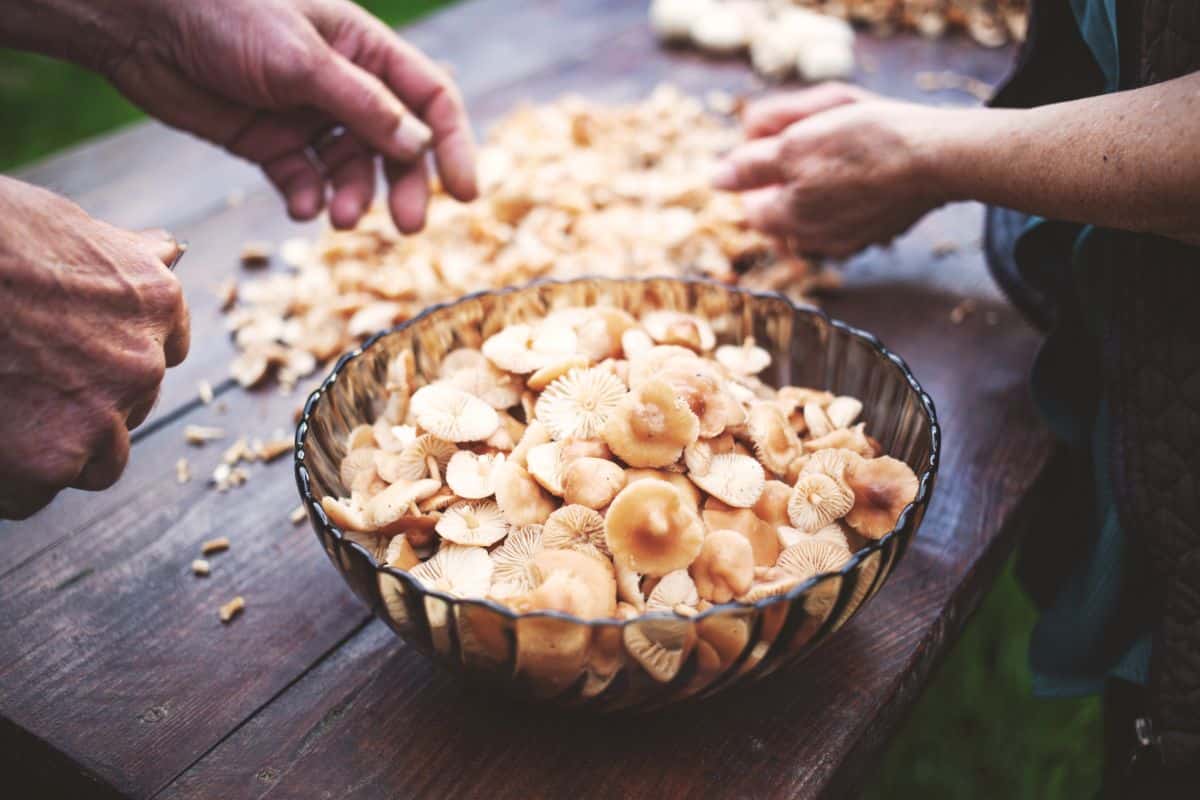
Due to the sweet flavor, a result of the trehalose sugar that also allows it to reconstitute so easily, this mushroom is used in baked goods such as cookies and pastries. For this use, the mushroom is dried and powdered before being incorporated into a recipe.
A neat feature of the fairy ring mushroom is that it will reconstitute fully from a dried state. This lends it to drying and dehydrating very well, and it will keep for a long time like this. A traditional drying method involves removing the stems and threading the caps together on a long string to be hung and dried.
Before cooking, remove the tough stems. Do this carefully, as too much force will tear the delicate caps – it can be a little frustrating because the stems are tough, but the cap is fragile. It’s best to use a sharp knife and cut the stems off instead of tearing or trying to snap them off. Don’t neglect to remove the stems, as they are generally too tough to eat and will ruin a dish if left on. Clean the caps by rinsing them in cold water.
Allow the mushrooms to dry between layers of towels in the refrigerator. Fairy ring mushrooms can be used in a variety of dishes, such as soups, stews, pasta sauces, and omelets.
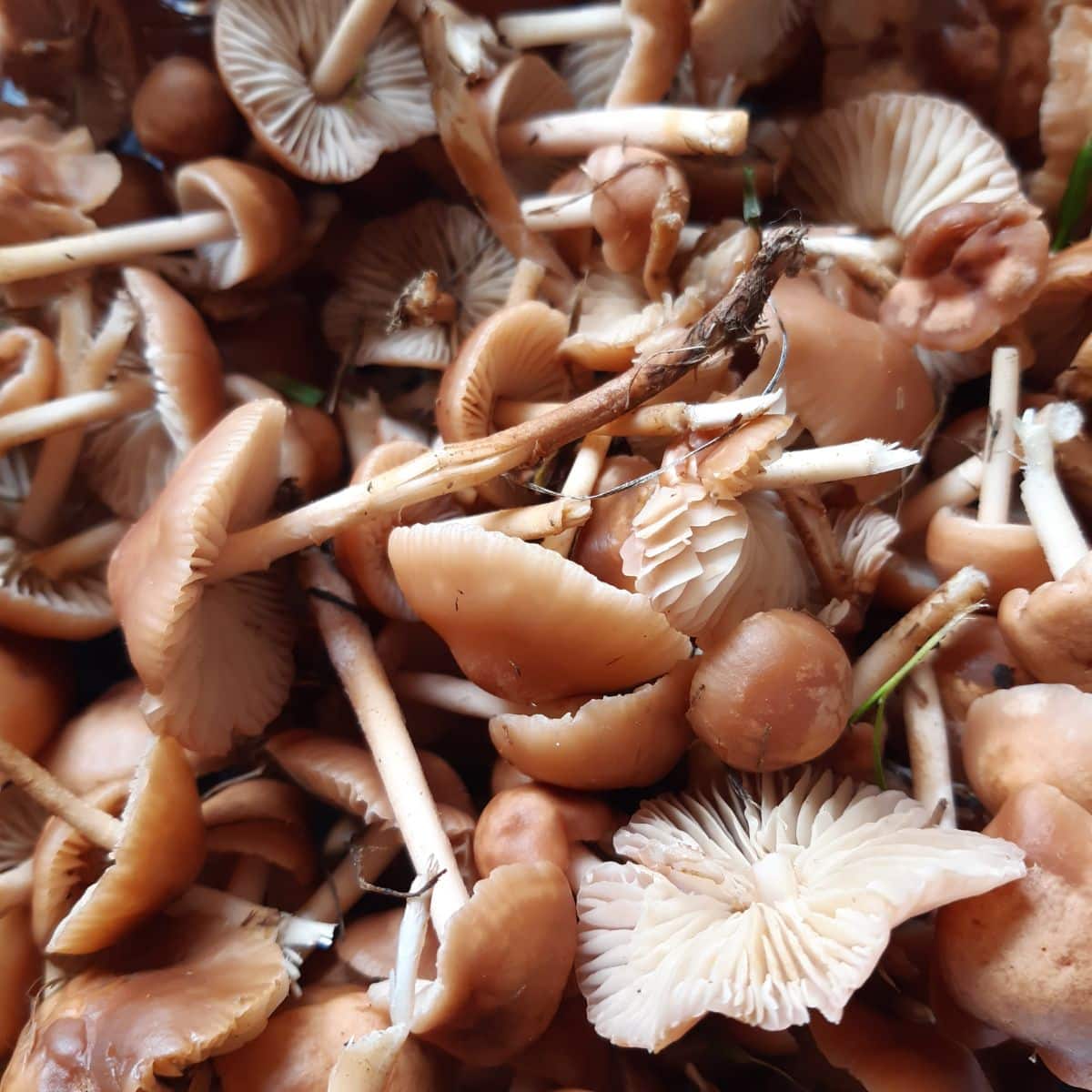
Fairy Ring Mushroom (Faux Mousseron) Recipes
- Scotch bonnet wild mushroom soup
- Fairy Ring Mushroom Cookies
- Fairy Ring Mushroom with Udon
- Coriander Fried Fairy Rings
- Scotch Bonnet Mushroom, Fried
- Fairy Ring Mushroom Pasta Sauce & Fairy Ring Mushroom Risotto
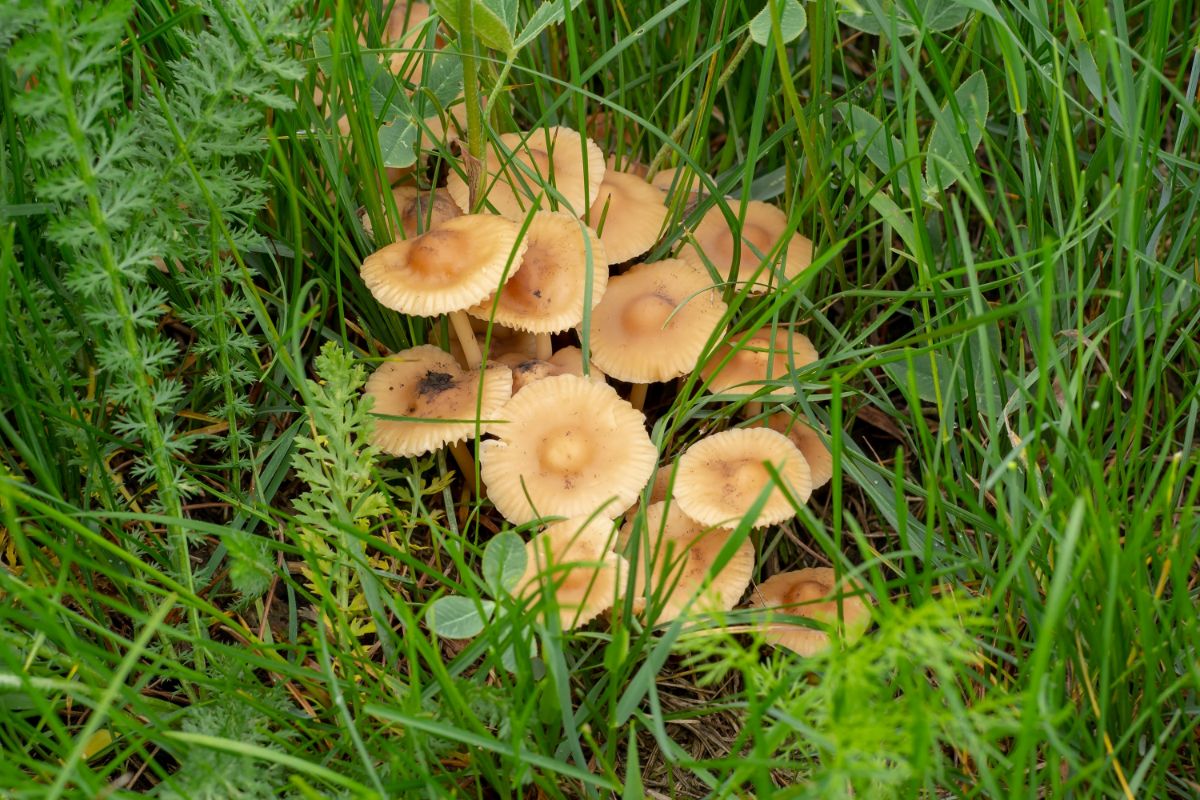
Fairy Ring Mushrooms and Lawns
Fairy ring mushrooms are not harmful to lawns. They help break down organic matter and recycle nutrients back into the soil – this is a good thing! The presence of these mushrooms means you have a lawn rich in nutrients and organic material.
However, a lot of people may not appreciate the appearance of these mushrooms on their lawns and want to get rid of them. Eradicating fairy ring mushrooms from your lawn is nearly impossible, as they feed on the organic matter present in the grass. Instead of trying to remove them, consider embracing their natural role in the ecosystem of your lawn. It’ll save you a lot of headache!
If you’re super determined, you can try picking them, but really, that won’t help much. The mushroom’s “roots,” known as mycelium, stretch out underground, and to get rid of the mushroom, you’d have to dig up all the mycelium. Basically, you’d have to destroy your lawn to get rid of the mushrooms.
The best thing to do is, once identifying them with certainty, is to harvest them for the table and thank Mother Nature for the bounty!
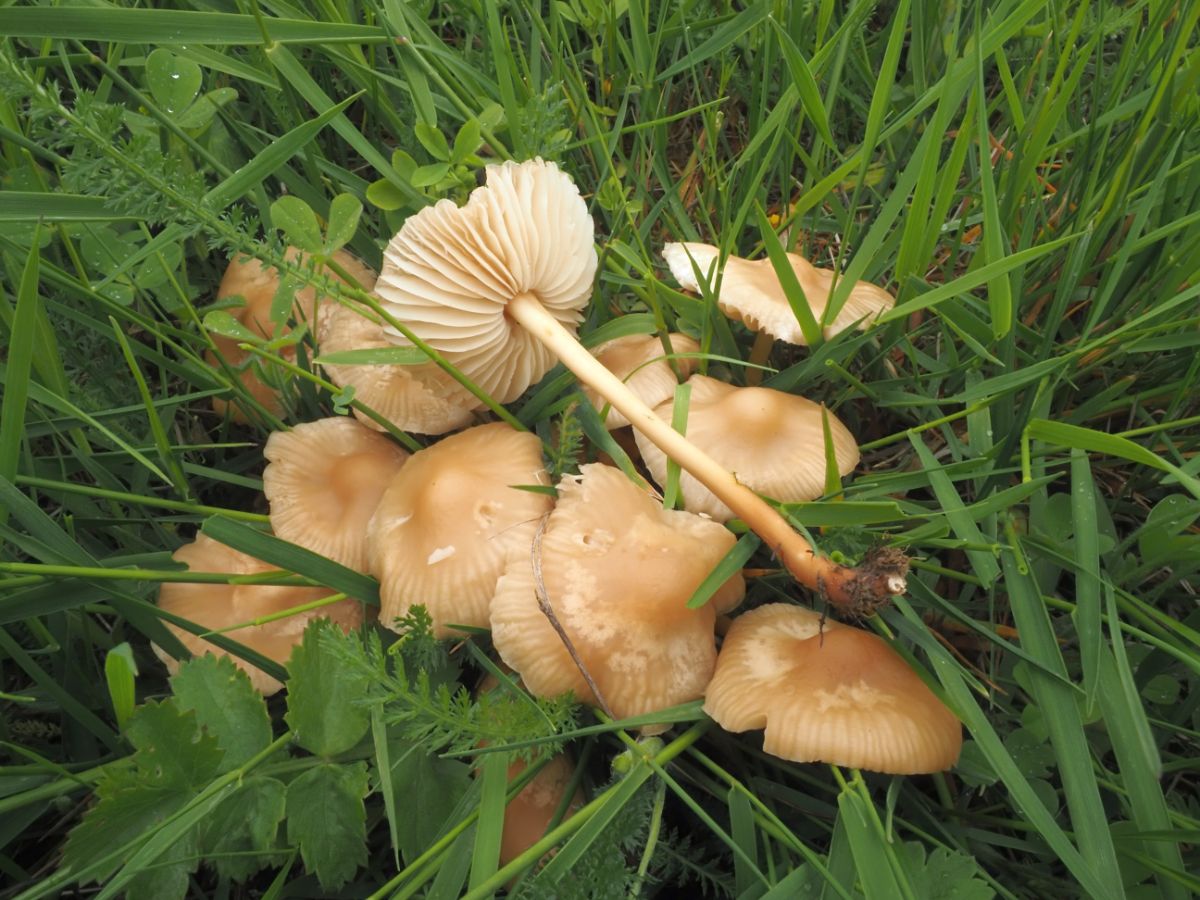
Fairy Ring Mushrooms Common Questions
What happens if you destroy a fairy circle of mushrooms?
Besides being a fruitless effort (they’ll always come back), some people say destroying a fairy ring is unlucky. It is believed that fairy ring mushrooms bring good luck and that they are indication that there is a fairy village underground. Another folkloric story says you should never step into a fairy ring, as it will make you invisible or you’ll become trapped there forever.
Are fairy rings rare?
Not really. They are more common in some areas of the world than others, but they aren’t rare. In North America, fairy ring mushroom circles are more common east of the Rocky mountains.
They can’t grow just anywhere or in every lawn or grassy area. Multiple factors influence their circular growth pattern, including soil type and condition, amount of nutrients in the soil, obstructions underground, and dirt composition.
How long do fairy rings live?
The oldest fairy rings are believed to be hundreds of years old. In France, one particular fairy ring mushroom circle spans over 2,000 feet in diameter and may be over 700 years old.

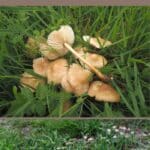

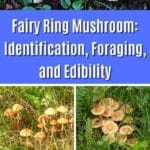
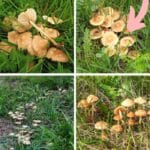

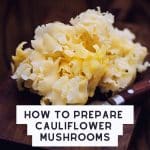
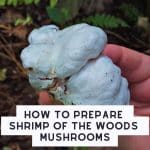
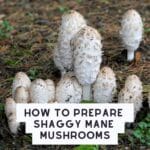
Lamia says
Do fairy ring mushrooms grow in South Korea? The mushrooms I see in the grass everywhere looks a lot like the edible one you’ve depicted (though I wouldn’t eat them here since the ground is heavily treated). It’s mostly for curiosity’s sake that I’m asking. They’re pretty cute nonetheless.
Jenny says
Sources say it does not grow in South Korea. There are a lot of small brownish mushrooms in the world … it can be quite difficult to tell them apart. I highly recommend looking for a mushroom/mycology group in your area as they’ll know the best about what grows there — every part of the world is quite different! Good luck
Eowyn Dernhelme says
Hi, Jen. We had a fairy circle mushroom set growing in our front lawn in Eastern Washington. It had blown over from the school across the street. I told the g’kids to not handle them, as I was worried about perhaps a poisonous variety. I did warn them also that if they stood inside it they would be transported to fairyland and not be seen in this world for 100 years. They called my bluff and did it anyway 🙂 the standing in it, not the eating of it. Thank you for your article.
Jenny says
LOL! I’m with the kids, being transported to fairy land doesn’t sound all that bad… 🙂